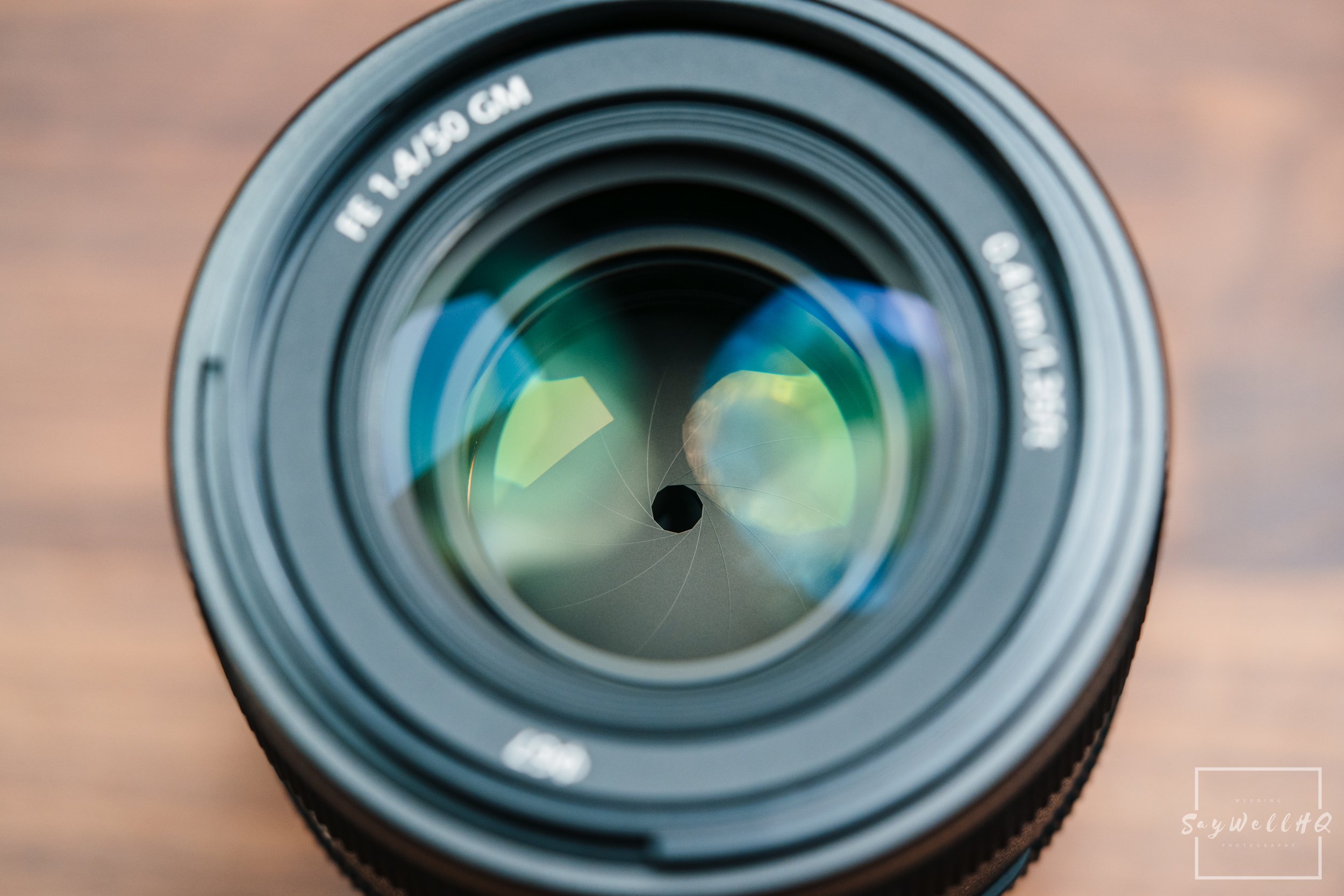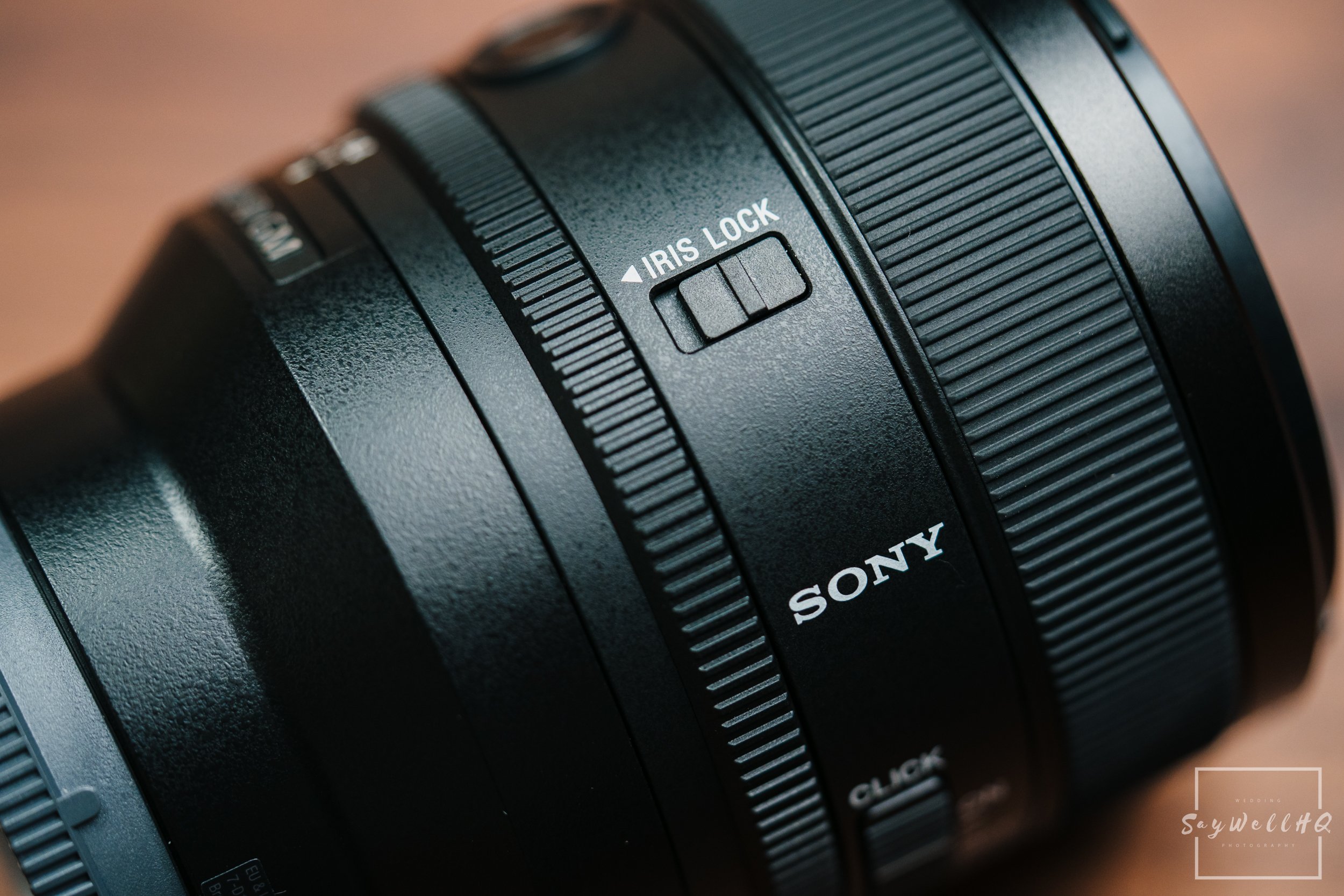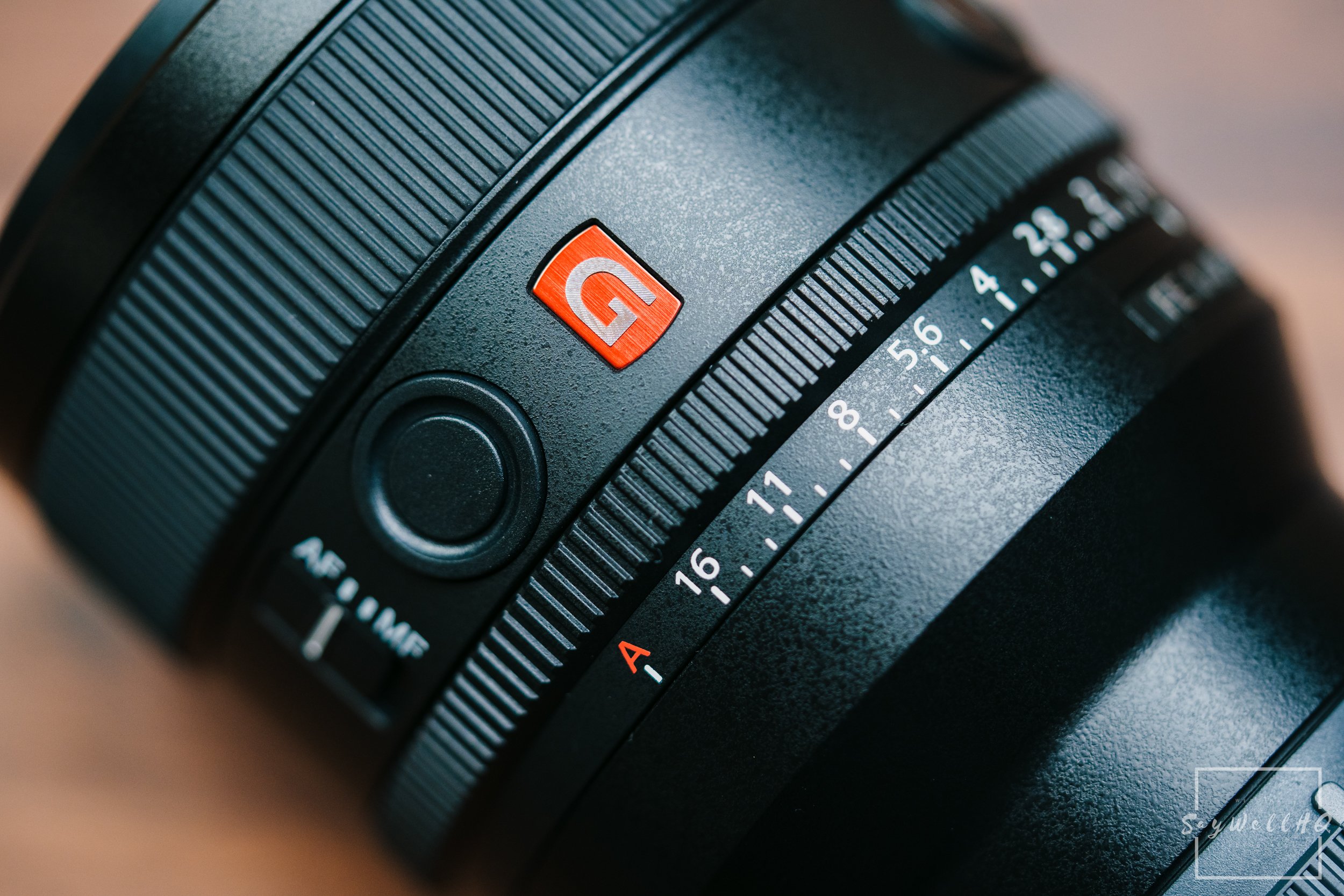REVIEWS | WEDDING PHOTOGRAPHY WITH THE SONY FE 50mm F1.4 GM LENS
In this blog post, I share my experience using the Sony FE 50mm F1.4 GM lens on a wedding day, compare it with my previous Sony FE 50mm F1.2 GM, and give my final thoughts on which one works best for me.
Introduction
As a wedding photographer, having the right lens and focal length can make all the difference in capturing those once-in-a-lifetime moments. One focal length that’s been central to my work is 50mm — first with the Sony FE 50mm F1.2 GM, and now with the Sony FE 50mm F1.4 GM.
In this article, I’ll share the features and benefits of the 50mm F1.4 GM, and how it fits perfectly into my wedding photography setup. From morning preparations and emotional ceremonies to heartfelt speeches, this is a versatile lens that never leaves one of my Sony A1 bodies.
The Evolution of Sony 50mm Lenses
Sony has been steadily expanding its mirrorless lens lineup for years, and the release of the Sony FE 50mm F1.4 GM in February 2023 is a welcome addition to the ever-growing E-mount range.
Before this, the most recent 50mm option was the Sony FE 50mm F1.2 GM, released in March 2021 (you can read my 100-wedding review of that lens here).
Other popular choices for Sony shooters included the Zeiss Planar T* FE 50mm F1.4 ZA and the Sony FE 55mm F1.8 ZA Carl Zeiss Sonnar T*. Both had their strengths, but also their drawbacks — including noticeable purple fringing and issues with decentered copies.
HOW I USE A 50mm LENS ON A WEDDING DAY
The Sony FE 50mm F1.4 GM is incredibly versatile, working beautifully across the entire wedding day — from morning venue shots to intimate moments during the ceremony. It’s equally strong during family formals and speeches, offering the perfect balance between subject isolation and contextual storytelling. The 50mm focal length lets me get close to the action while still retaining the atmosphere of the moment.
I shoot every wedding with three cameras and three lenses:
Sony A1 + 20mm F1.8 G
Sony A1 + 35mm F1.4 GM
Sony A1 + 50mm F1.4 GM
Some photographers question having both a 35mm and a 50mm, as the focal lengths seem close on paper. But in practice, they produce very different results. The 35mm offers a wider perspective, ideal for capturing the scene and connections between people, while the 50mm gives a tighter, more intimate view. This pairing allows me to move seamlessly between wider context and closer compositions, maintaining a cohesive visual flow without the jarring shift you often get when jumping from 35mm to 85mm.
One of the real advantages of the Sony A1 paired with the 50mm F1.4 GM is the ability to switch from full-frame to APS-C mode and still have a 20-megapixel file. With the A1’s 50.1MP sensor, APS-C mode turns the 50mm into an effective 75mm lens (in terms of reach), giving extra reach without sacrificing image quality — perfect for candid moments during the ceremony or speeches when I need to get in just that bit closer.
WEDDING PREP
WEDDING CEREMONY
FAMILY FORMALS
WEDDING PORTRAITS
WEDDING SPEECHES
WEDDING FIRST DANCE
SONY FE 50mm F1.4 GM - THE GOOD
Image Quality
One of the standout features of the Sony FE 50mm F1.4 GM is its exceptional image quality. With a wide maximum aperture of f/1.4, it offers superb depth-of-field control and produces beautiful, creamy bokeh. Images from this lens have a distinct look and character that set it apart from other F1.4 options in the Sony E-mount lineup.
Shooting wide open at f/1.4 allows for an ultra-shallow depth of field, perfect for isolating a subject or highlighting small but important details within the frame.
There is, however, one drawback — lens flare — which I’ll cover in the Not So Good section.
Autofocus
In wedding photography, speed and accuracy are everything. Paired with the Sony A1, the Sony FE 50mm F1.4 GM forms a dream team.
The A1’s advanced autofocus system and impressive tracking capabilities perfectly complement the lens’s performance, ensuring that almost every frame is tack sharp and in focus — even when shooting wide open at f/1.4 in challenging lighting conditions.
Size & Build Quality
One thing Sony has been doing well with its recent GM prime lenses is keeping them compact and consistent in size. The Sony 24mm F1.4 GM, 35mm F1.4 GM, and 50mm F1.4 GM all share the same 67mm filter thread, similar weights, and near-identical dimensions — between 92mm and 96mm in length, and 75mm to 81mm in width. This makes them ideal for photographers who like to travel light and perfect for videographers using gimbals, as swapping between these lenses doesn’t require rebalancing.
I’m not gentle with my gear — my 50mm F1.4 GM has been banged and knocked into walls more times than I’d like to admit while chasing certain shots. Despite that, it’s never let me down. The build quality on Sony’s GM lenses is exceptional, and it’s one of the main reasons professionals invest in them: they’re reliable, durable, and capable of delivering years of consistent performance.
Aperture Ring
I’m a photographer who prefers to use the aperture ring on the lens itself to control my aperture.
Some photographers like to adjust aperture using the front or rear dial on the camera body, but I’ve never got on with that. I tend to knock or roll those dials accidentally, which would mean changing the aperture without realising — and suddenly finding myself shooting at F16 instead of F1.4!
Every lens I use for weddings has an on-lens aperture ring. It’s a feature I’ve loved ever since my time shooting with Fujifilm, and I’m glad to see Sony adding aperture rings to more of their lenses — not just the G Master range.
On Lens Functions, Buttons & Locks
The Sony FE 50mm F1.4 GM lens comes equipped with a range of on-lens buttons and switches:
AF/MF switch – Quickly toggle between autofocus and manual focus.
Two programmable buttons – Assignable to a wide variety of functions via the camera menu. Both buttons are linked to the same function, and their placement ensures one is always within reach, whether shooting in portrait or landscape orientation.
Aperture click/de-click switch – Lets you turn off the tactile clicks of the aperture ring. Ideal for videographers who need to adjust aperture smoothly and silently while recording.
Aperture lock switch (‘Iris Lock’) – Locks the aperture ring to the ‘A’ position so aperture control is handled via the camera’s front or rear dials. This prevents accidental knocks to the aperture ring that could override dial control.
THE NOT SO GOOD
SONY FE 50mm F1.4 GM LENS FLARE
The only real issue I’ve had with the Sony FE 50mm F1.4 GM is the occasional, and sometimes rather unattractive, lens flare.
The images below were taken at my very first wedding with the lens. I noticed the flare in the EVF while shooting, so I deliberately took a few more frames to see if I could replicate it (examples shown below).
It’s worth noting that I was able to capture similar shots without any flare, but if you’re a wedding photographer who likes to shoot around sunset — especially with the sun behind or off to the side of the couple — it’s something to be aware of.
Above, you can see the sizable circular dot of light on the suit, and I think you can see another flare to the left of the Bride’s dress.
In the example above, you can see a slightly different type of lens flare — a small circular light, followed by a streak across the flare, ending in a small light dot.
This isn’t unique to the 50mm F1.4 GM. Other Sony GM lenses, such as the FE 35mm F1.4 GM, can also produce flare under certain conditions — and in some cases, the flare from the 35mm can be even more pronounced.
SONY FE 50MM F1.4 GM vs. SONY FE 50mm F1.2 GM
So, Sony FE 50mm F1.4 GM vs. Sony FE 50mm F1.2 GM?
I owned the Sony FE 50mm F1.2 GM from early May 2021, with its first wedding outing in early June that year. It stayed in constant use until 11 March 2023, when my copy of the Sony FE 50mm F1.4 GM arrived.
Why switch to the F1.4 when I already had the F1.2?
It came down to size and weight — nothing else. If the F1.4 could give me everything the F1.2 did (apart from that extra bit of aperture), I knew I’d move over. By going lighter with the F1.4, I could add a battery grip to my Sony A1 without worrying about running out of power during a key moment.
What are the real differences?
No matter what people say, the Sony 50mm F1.4 GM isn’t an F1.2 lens — there is a difference when both are shot wide open. The F1.2 is a special lens with a unique look, but here’s the reality: will anyone apart from the photographer notice? Wedding couples certainly won’t be able to tell the difference.
I loved the 50mm F1.2 and often shot at F1.2 during the day, especially in ceremonies when I wanted to really isolate one person. It was fantastic for that.
Both the F1.4 and F1.2 share a lot of strengths:
Tack sharp wide open.
Minimal distortion.
Very low purple fringing, even in high-contrast, backlit scenes.
Extremely fast autofocus (the F1.2 might be a touch quicker, but we’re talking rocket ship vs. rocket ship).
Natural vignetting wide open (I prefer this and don’t use lens corrections).
Both can flare, but the F1.2 handles strong light slightly better.
The verdict:
If you want the absolute F1.2 look, there’s no substitute for the F1.2. But for me — and for most wedding photographers — the F1.4 is more than good enough. It delivers 90–95% of what the F1.2 offers, in a lighter, more manageable package. I’m very happy I made the switch… and maybe, just maybe, if Sony had released the F1.4 first, I’d never have bought the F1.2 at all.
SONY FE 50MM F1.4 G MASTER LENS IMAGES


















